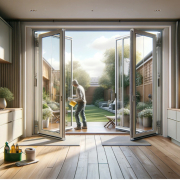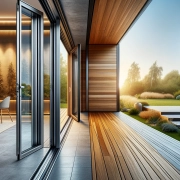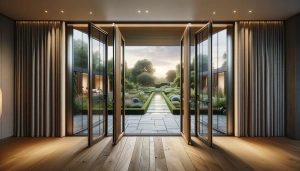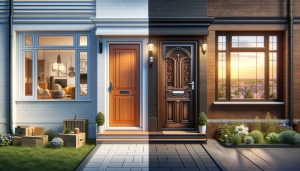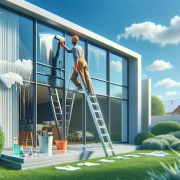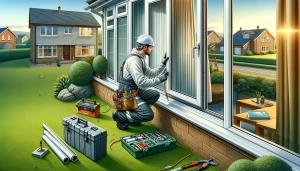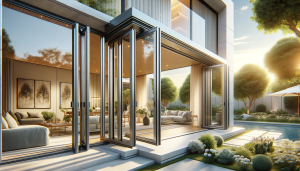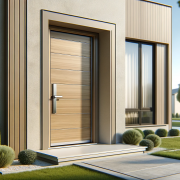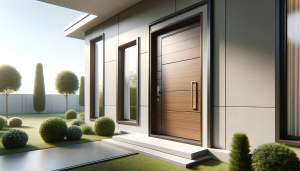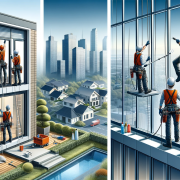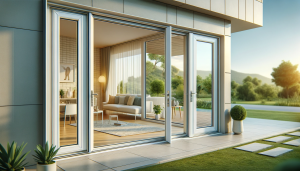Bi-folding Door Maintenance
Mastering Bi-Folding Door Maintenance: Ensuring Longevity and Flawless Functionality
Table of Contents
Bi-folding doors can transform a living space, inviting light in and erasing the barriers between indoors and out. But like any complex mechanism, they require a little love and attention to keep them looking good and functioning smoothly. Here’s how to maintain your bi-folding doors for years of trouble-free use. Establishing a maintenance routine for your bi-folding doors is not just about keeping them functional; it’s also about prolonging their lifespan and ensuring they continue to operate with the same ease as on the day they were installed.
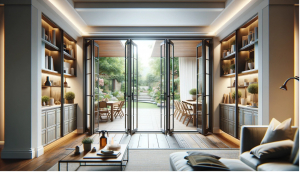
Setting the Foundations with Regular Inspections
Crafting a Maintenance Routine
A well-crafted maintenance routine involves regular check-ups and immediate action on any arising issues. Monthly inspections can help catch minor problems before they escalate, saving you time and money in the long run.
Spotting Signs of Wear and Tear
Regular use can lead to wear and tear. Keep an eye out for any changes in the way the doors operate; any stiffness, squeaking, or resistance could be a sign that something is amiss.
The Importance of Professional Assessments
Keeping the Glass Gleaming
The glass panels of your bi-folding doors are more than just a window to the world; they are the centrepiece of their design and functionality.
Choosing the Right Cleaning Agents
Using the appropriate cleaning solutions is crucial. Opt for a gentle, non-abrasive cleaner to avoid damaging the glass and always follow up with a soft, lint-free cloth for a flawless finish.
Techniques for a Streak-Free Shine
The secret to streak-free glass lies in the technique. Clean from top to bottom and consider using a squeegee to remove any excess cleaning solution, ensuring your glass remains crystal clear.
Addressing Scratches and Condensation
Scratches can mar the appearance of your doors, but they can often be buffed out with the right products. Condensation, on the other hand, may indicate a seal issue and should be assessed by a professional.
Frame and Track System Maintenance
Keeping Tracks and Frames Clean
Dirt and debris can accumulate in the tracks and frame recesses, causing operational issues. A regular clean-out will prevent buildup and keep your doors moving freely.
Lubricating for Smooth Operation
A silicone-based lubricant can work wonders on sticky tracks. Apply sparingly and ensure it is evenly distributed for the best results.
Alignment Checks for a Perfect Fit
Misalignment can occur over time, but it’s often a simple fix. Look out for any unevenness in the door placement and adjust according to the manufacturer’s instructions, or call in a professional to realign the doors.
Hinges, Locks, and Handles: The Essentials of Door Hardware
Hinge and Lock Maintenance
Hinges should be checked for any signs of rust or corrosion, and any moving parts within the locks should be lubricated regularly to keep them turning smoothly.
Seal Replacement for Weather-Proofing
Over time, the seals on your doors can wear down. Check them as part of your routine, and replace them if they’re no longer providing a tight seal.
Updating Hardware for Enhanced Performance
Door technology evolves, and newer hardware can offer improved security and ease of use. Consider upgrading if your doors are a few years old or if you’re seeking additional features like improved locking mechanisms.
Weatherproofing: The Guardian of Door Longevity
Sealing Against the Elements
A key aspect of bi-folding door maintenance is ensuring that the weather seals are always in top condition. Regularly inspect the seals for any signs of damage or wear, such as cracks or gaps that could let in draughts or moisture.
Insulation Integrity
Good insulation is fundamental for energy efficiency and comfort. Check the insulation around your doors periodically and address any issues promptly to maintain a cosy and warm interior, especially during the colder months.
Timely Replacement of Weather Stripping
Weather stripping can deteriorate over time, losing its effectiveness. Replacing it at the first sign of wear not only improves energy efficiency but also helps in the smooth operation of the doors.
Diagnosing and Addressing Common Issues
Overcoming Sticking and Misalignment
Sticking or misaligned doors can be a nuisance. Regular cleaning, proper lubrication, and ensuring that the doors are hung correctly can often solve these issues.
Fine-Tuning for Flawless Closure
If your doors aren’t closing properly, adjustment screws can usually rectify the issue. Check your manufacturer’s guide or consult a professional to make precise adjustments.
Quieting Down Noisy Operations
Squeaks and creaks aren’t just annoying—they’re signs that your doors need some attention. Lubrication and tightening any loose components will usually bring back the peace and quiet.
Seasonal Adjustments and Preemptive Measures
Preparing for Seasonal Shifts
Different seasons can bring different challenges for bi-folding doors. From expanding tracks in the heat to contracting seals in the cold, being prepared for these shifts can prevent issues from arising.
Proactive Replacements and Upgrades
Don’t wait for a breakdown to think about replacements. Being proactive about replacing parts that are showing age or wear can save you time and trouble.
When to Call in the Experts
While many maintenance tasks can be handled on your own, there are times when a professional should step in. If you’re unsure about a repair or if a problem persists, it’s time to call in the experts.
Embracing New Maintenance Technologies
The Rise of Smart Maintenance Tools
Technology has given rise to smart tools that can help you monitor the condition of your doors, reminding you of maintenance schedules and alerting you to issues before they become serious.
Material Advancements for Easier Upkeep
Research into new materials promises a future where bi-folding doors are even more durable and require even less maintenance than they do today.
Anticipating the Doors of Tomorrow
The bi-folding doors of the future may self-adjust to weather conditions, self-lubricate, and even alert you to security breaches. Keeping an eye on these advancements can help you choose the best options when it comes time to upgrade. In wrapping up, maintaining your bi-folding doors is about more than just preserving their appearance—it’s about ensuring their performance and reliability for years to come. Regular maintenance keeps them operating smoothly and efficiently, while also preventing minor issues from becoming costly repairs. By following the guidelines and tips outlined here, you’ll enjoy the full benefits of your bi-folding doors, making them a valuable feature of your home.

